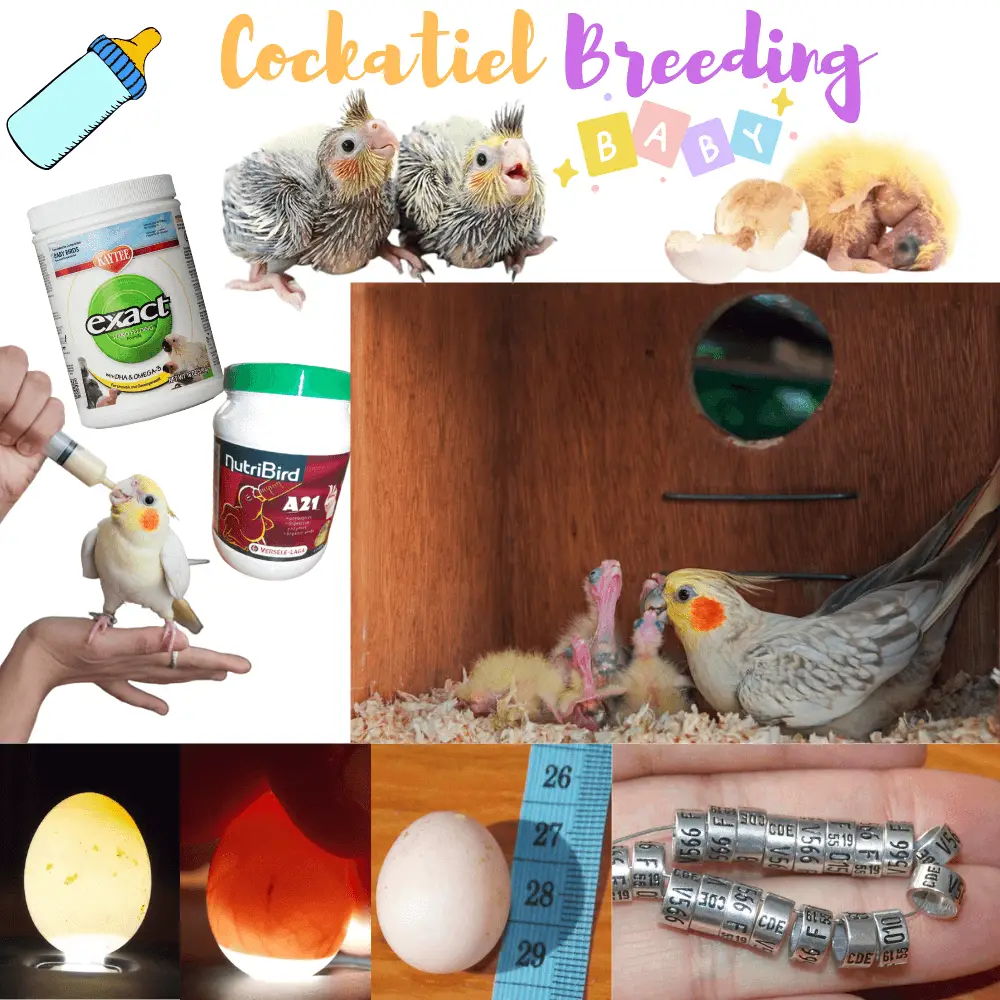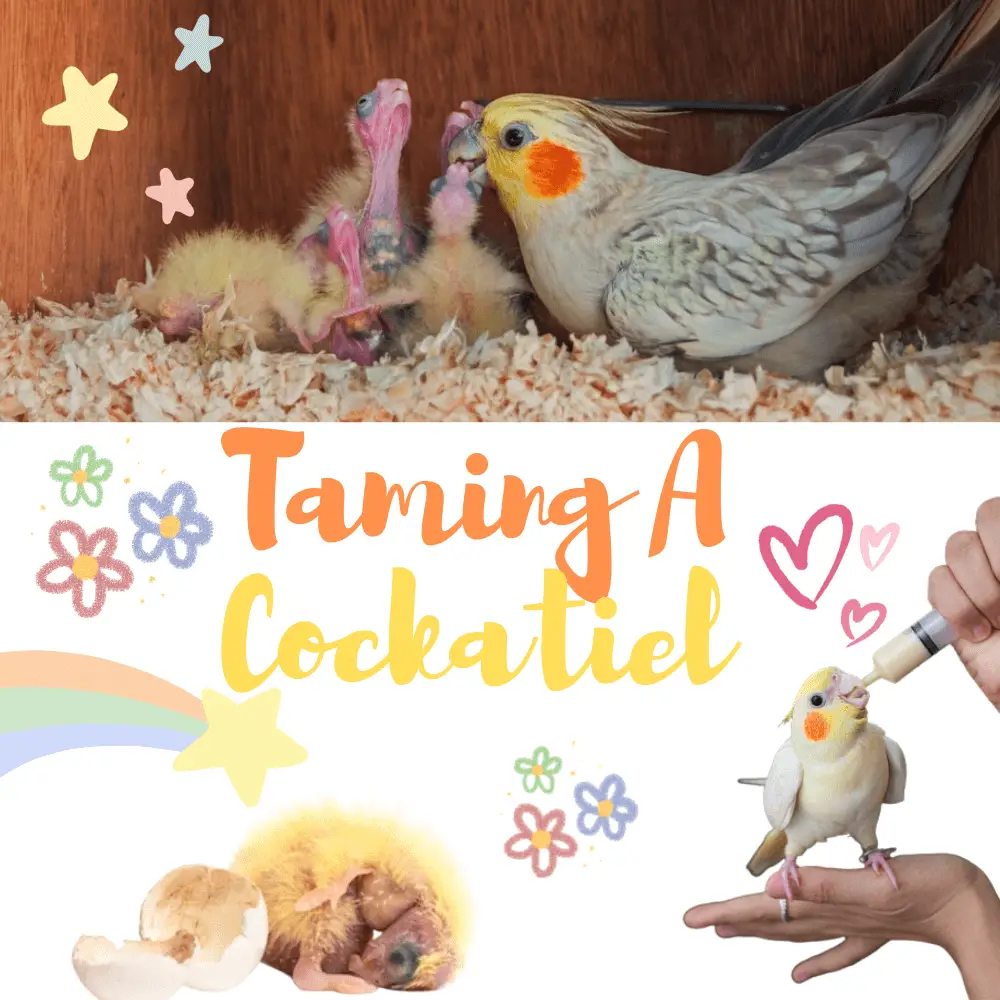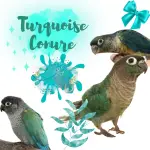
Cockatiel breeding: Cockatiels are a breed of birds that are very easy to breed, the breeding cockatiel is very easy but it is important that you show responsibility and make sure you are able to provide them with a proper living environment. First of all, you need to check that the male and female you choose are suitable for cockatiel breeding and that these birds will have everything you need to incubate their young.
Finding the right pair of cockatiel
Make sure your cockatiels are old enough. For cockatiel breeding reasons, the male and female should each be at least 18 months old. Younger females may suffer from problems such as egg retention and younger birds may also be unable to properly care for their young.
- Egg retention is the inability of the female to get out the eggs that get stuck in the cloaca. This can cause infection and even death.

Check that your birds are healthy. Before you make the decision to breed stylish cockatiel, it is wise that you consult an avian veterinarian to have a clear assessment of their health. This will also allow you to protect yourself from any diseases or defects your birds may have. Weight is also a factor that provides a lot of information about the health of the caps.
- Check if there is an overweight: overweight increases the chances of egg retention in the female and infertility in both sexes. If you are not sure that your cockatiel is overweight, try touching its sternum. If you do not succeed, you are facing the case of being overweight.
- Check if it is underweight: If your bird is underweight, it implies that it is suffering from a disease or that another bird is grabbing the food and preventing others from eating. Before you even start raising your caps, you need to find out the reason behind this underweight.
Preparing for breeding
All you need to know about Cockatiel breeding step by step
Feed your birds properly. Before you start raising them, it is crucial that you check that your birds are well-fed. Provide them with a balanced diet that is suitable for cockatiels. Check your birds regularly to make sure both have equitable access to water and food. If you notice that a bird appropriates both, then you can add additional bowls of food and water. Among the most suitable foods for cockatiel parakeets are, in particular :
- seed mixtures for a cockatiel,
- soft foods such as pasta, cooked beans, cooked rice, wet wholemeal wheat bread, and green vegetables,
- sprouted seeds,
- mineral blocks or cuttlefish bone for calcium intake,
- supplements (to be spread on other meals) such as proenzymes, echinacea, spirulina,
- fresh and clean water (it will have to be changed several times a day).
Install both birds in a large cage. Your cockatiels will need plenty of space to mate and even more when the chicks are born. Make sure that the cage in which you will install your pair of birds measures 183 cm by 91 cm. You can place both birds in their cage a few weeks before bringing a nest box. In this way, they will get to know each other better and enter into synchronization in order to mate.
- Set up the cage in one of the quietest areas of your home to allow the couple to enjoy the silence and privacy needed to mate, incubate and hatch their eggs as well as raise their young.
Install a nest box. After the two birds have spent at least 2 weeks together and they begin to get along well, you will need to provide them with a nest box. You should consider the following criteria when choosing this accessory.
- The material: several types of nest boxes are available including plastic, metal, and wood. These are a great option, as birds will peck at the entrance to customize it to their liking.
- Dimensions: a cage of 31 cm by 31 cm is sufficient to raise cook almost.
- The availability of a rear access door: Some nest boxes have a rear access door, which allows you to control birdies without disturbing their mother.
- Litter: adult cockatiels will use the litter to make a cozy and secure nest for their babies. The best nesting materials include pine chips or uncolored paper materials such as newspapers or white paper towels. Do not use cedar chips, as the oils contained in them can injure or kill the chicks.
Cockatiel breeding

Raising your cockatiels
Observe signs of mating. When it comes time to mate, the male will perform a bridal dance. During this dance, he will nod, hop in all directions and sing. You will also notice that birds will chip more often. When the female is ready to mate, she will squat. Once in this position, the male will be able to easily mate with her.
- Mating can last a minute, after which the male will fly away.
- About two weeks after mating, the female should lay eggs.
Let the parents incubate their eggs. They will take turns doing this, but it is the female who spends the most time on the eggs. You may also notice that both parents pull out feathers themselves to expose their bare skin. This is called an incubator plate and parents do this so that their bare skin can come into contact with the eggs.
- Hatching can last up to 3 weeks, but the female will lay the eggs about 7 days before she is able to incubate them. [14] . She will lay one egg every other day until she lays about 2 to 8 eggs.
- The male will provide food for the female while she incubates the eggs.
Do not touch the nest box. After three weeks of incubation, the eggs will hatch. You can then take a quick look at the nest box to make sure there are no sick or dead birds. Otherwise, do not disturb the new family. Allow parents and new children to spend time together and stay intimate in order to bond.
- It is only when they are between 8 and 10 weeks old that the cockatiels will begin weaning (eating without the help of adults). At this time, you will need to separate the male chicks from the females to prevent them from mating. Siblings can pair up two by two and mate if the conditions are right. It is therefore best to separate them to avoid unwanted babies.
Reduce reproductive activity. After your cockatiels have been mated and designed from a young, you will need to take precautions to prevent this from happening again. There are several things you can do to prevent them from mating.
- Decrease the light: Providing a little less light each day will discourage birds from mating. For example, you can reduce the amount of light you provide to your caps by going from 10 to 12 hours of lighting to about 8 hours a day. This will simulate winter conditions and greatly decrease the chances of your birds mating.
- Remove the nest box: once your birds have finished using the nest box to incubate their eggs and raise their young, you can remove it from the cage.
- Remove soft foods: Stop feeding your cockatiels soft foods such as wet bread, beans, and pasta. However, always make sure to ingest nutritious foods.
Cockatiel breeding

Egg-laying and incubation in cockatiel parakeets
The cockatiel parakeet (Nymphicus hollandicus) is a very easy species to mate with in captivity. It begins to reproduce when the duration of the hours of sunshine increases, in January, and a nest is made available. Researchers have even shown that it causes an increase in her sex hormones causing her to nest. This is one of the reasons why the nest must be removed outside breeding seasons.
Once a mature parrot pair is formed, it usually mates without difficulty. Note, however, that partners prefer to choose themselves within a group rather than being matched without being consulted. Care should be taken to provide them with fresh food (fruits and vegetables) in addition to the usual seed mix, to simulate the opulence of food available in the wild during the cockatiel breeding season.
Diet is even more important than usual, as it will allow the embryos to develop smoothly until hatching. An intake of calcium (especially through cuttlefish bone), vitamin D3, and phosphorus are also essential. It is possible to provide them with psittacines using products such as Omni-vit or Opti-breed. These dietary supplements also aim to strengthen the mother’s body, which is widely solicited even in its reserves during such an exercise.
A female most often lays four to six eggs, at the rate of one every two days. Most of the time, it begins to brood after the last one, but sometimes some do it as early as the second. Twenty-four hours before laying the first one it will produce a huge dropping. This sign does not deceive.
Therefore, keep an eye on your protégés by intervening as little as possible, so as not to shade the brood. The couple will take turns brooding for 16 to 21 days, the average being 20 most often. It is usually the father who takes care of the incubation during the day, the mother taking over at night. The male can then be aggressive, as he is dedicated to protecting the nest from anything that might look like a predator, including you.
Parents bury an egg to lower its temperature when hatching is near. This produces gas exchange in the shell and the amount of carbon dioxide increases. The chick then knows that it is time for him to “enter the world”. He will breathe his first breath of oxygen in the small pouch that has formed in the egg. It can then be heard chirping before hatching. You will have an overview:
Inexperienced parents sometimes come into conflict during this time, not sure who has to do what to make sure everything goes smoothly. If it takes a turn too violent, it may be necessary to remove the male so that he does not hurt his mate. We must therefore accept the fact that not all parakeets are made to have young, the fate of some as simple pet birds being far preferable. In case of failure, it is important to analyze what happened to prevent it from happening again. But if your Calopsittes turn out to be wonderful parents, attentive and diligent, you can share this moment with them.
Reasons for the reproductive failure of cockatiel
Hornbills (Nymphicus hollandicus) may have difficulty breeding or managing a captive brood. There are different and many explanations for this phenomenon.
The age of the partners may be involved. Too young, they are likely to not be able to take care of their eggs and chicks. These psittacines are sexually mature from 10 to 18 months. Females can reproduce for up to 8 or 10 years while males are prolific longer, up to 12 to 14 years. This is a generality because an excellent healthy bird can succeed in procreating beyond. But older ones are sometimes bad broodstock, even if they know how to incubate, raise and wean nestlings. Birds that are too young or too old may suffer from hormonal imbalances.
It seems that captive-bred individuals do not always make excellent parents. The skills to reproduce and care for a brood are a combination of innate and learned behaviors. Couples with poor experience are therefore at risk of injuring, abandoning, or eating the eggs or young that come out of them during the first laying. If they fail to feed them, recourse to (hand Cockatiel breeding ) is possible, although it should only be considered as a last resort. The explanation is that they did not spend enough time with their parents when they were young or that their parents themselves suffered trauma that they passed on to them.
Some Calopsittes will never give offspring at all because they are sterile. This may be due to a nutritional, medical, behavioral, or environmental problem. Infertility can be explained by malnutrition, obesity, vitamin or mineral deficiencies, bacteria, or a disorder of the genitals.
But human intervention can also interfere with the smooth running of the process if it is too frequent. Indeed, birds feeling threatened by a supposed predator could stop watching over their offspring, if only to protect their nest. “Forced marriages” are likewise likely to fail, with partners preferring to choose themselves within a group.
Finally, other factors may be involved:
- A bathing area not renewed daily
- the absence of food supplements to promote the growth of young (Omnivit and Optibreed are an excellent base so a cuttlefish bone =
- insufficient daylight to provide the UVA and UVB needed by budgies
- Poorly sized nest
- unsuitable nest-filling material
- unsuitable humidity or temperature level.
The parameters that can affect the reproduction of Calopsittes are therefore legion, which implies to be properly documented before starting. If your psittacines fail during a first egg-laying, look again at this information to analyze what may have been a problem.
Advice
- Educate yourself as much as possible and ask experienced breeders before attempting to raise your own mock allegations.
- Find a veterinarian who has a special interest in avian medicine or who has received this training. Thus, you will be able to receive help whenever problems arise.
Breed Your Cockatiel In The Best Way
SOURCE: Deepan’s Birds & Vlogs
Warnings
- Find responsible buyers for your chicks before you even start breeding. You certainly don’t want to have any more stylish cockatiels if you can’t resell them, do you?




















